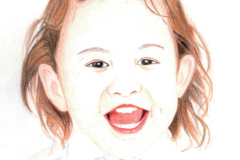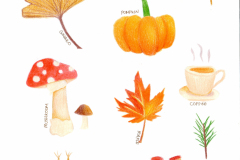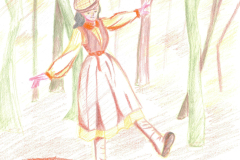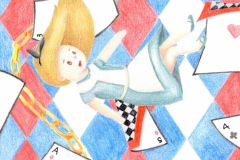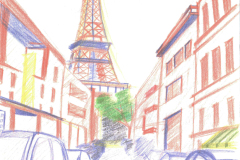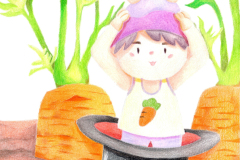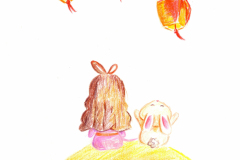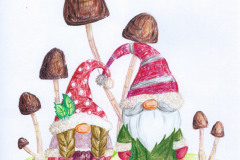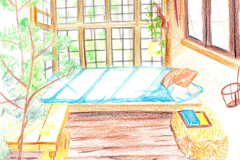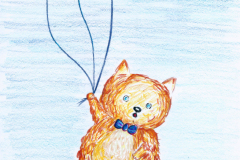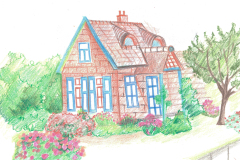Introduction
Creating unique witch characters allows you to explore a fascinating blend of tradition and imagination. Witches have a rich history in many cultures, often connected to magical powers and stories. When you combine this background with your own creative touch, you can invent characters that feel real and full of personality.
This article will guide you through understanding witch characters and how to use mixed media techniques to make them stand out. You will learn practical tips and ideas to bring your witch characters to life using different materials and artistic methods. Let’s dive into the world of witch characters and discover how to make them unique and compelling.
History and Traits of Witch Characters
Origins of Witchcraft in Culture
The idea of witchcraft stretches far back in history, spanning many cultures with very different views. In European folklore, witches often appeared as women with forbidden knowledge, sometimes feared, sometimes revered. Their power linked to nature, herbs, and the unseen world.
Meanwhile, African and Indigenous traditions frequently regard witchcraft as spiritual practice or healing, though some stories warn against misuse of power. In East Asia, witches might be shamans or mediums, communicating between worlds rather than just casting spells.
So, witches don’t always fit one mold. They are at once healers, outsiders, tricksters, or threats — it depends on the culture and period. This variety suggests you can take liberties when designing characters, perhaps weaving together elements from different traditions.
Common Features of Witch Characters
When you picture a witch, certain traits tend to come up. Here are some typical features you might consider for your characters:
- Physical Traits: Sharp facial features, sometimes a hint of age or mystery; often wild hair or unusual eye color. Think about why these features matter — they signal power or otherness.
- Personality Traits: Independence, intelligence, sometimes secrecy; witches often challenge norms and authority. They can be stubborn or enigmatic, which adds depth.
- Tools and Symbols: Wands, potions, familiars like black cats or owls — these help ground your character in witchcraft visually and symbolically.
- Connection to Nature: Many witches relate deeply to the earth, plants, or animals, highlighting a bond beyond everyday life.
These traits give you a starting point, but think about what fits your story best. What if your witch is gentle rather than fierce? Or shy rather than bold? These decisions shape readers’ or viewers’ reactions and make your character unique.
Choosing Your Witchs Personality and Role
Defining Personality Traits
When deciding on your witch’s personality, think beyond the usual mysterious or sinister traits. What makes her tick? Maybe she’s curious but cautious, or perhaps stubborn and wise in unexpected ways. You want traits that feel real—flaws included. Is she quick-tempered? Gentle? Or maybe she struggles with self-doubt beneath a confident surface. These layers draw people in and make her relatable. Take time to ask yourself how she reacts when things go wrong or when someone challenges her. Real personalities aren’t always consistent, so don’t hesitate to embrace some contradictions. Personality shapes attitude, style, and even the magic she uses, so choose traits that highlight who she is, not just what she does.
Determining the Character’s Role
Your witch’s role shapes how the audience sees her and influences her appearance and behavior. Will she be the hero, a mischievous villain, or a wise guide helping others? Each role demands different energy and expression. Heroes might be more grounded, with practical outfits and determined postures, while villains might have darker tones, sharper angles, or eerie details. Guides often feel calm or enigmatic, embodying mystery rather than direct confrontation. It’s tempting to stick to familiar roles, but mixing things up can spark new ideas. What if your witch is neither fully good nor bad? That ambiguous space gives room for richer storytelling and more complex designs. Remember, the role you pick steers your creative choices—sometimes surprisingly so.
Materials for Mixed Media Witch Characters
Traditional Art Supplies
When creating witch characters through mixed media, traditional materials remain a solid foundation. Paper in various textures and weights gives you a versatile surface to work on—it could be smooth Bristol for detailed drawing or rough watercolor paper to catch texture. Paints also play a big role, and you might find yourself mixing acrylics for their bold colors with delicate watercolor washes that add subtle shadows or atmosphere.
Fabric pieces can bring literal texture and depth, which often suits witch characters well—think of tattered lace for a vintage look or velvet for something richer. Sewing or layering these fabrics onto your base can evoke old robes or scarves, hints at their world without spelling everything out. Sometimes, the smallest scrap of cloth adds more personality than elaborate brushstrokes.
Don’t forget pens, inks, and colored pencils. Fine liners help define details like wrinkles or spell markings, while colored pencils can add softness or highlight facial features. As you start sketching your witch, these familiar tools give you control and flexibility, even if you later add other elements.
Unconventional Materials
The charm of mixed media lies in pushing beyond traditional supplies. Found objects—twigs, feathers, pieces of metal—can transform a flat image into a tactile experience. For example, embedding a small rusty key or a shard of glass could hint at your witch’s story or totems. It’s strange, but sometimes these unexpected bits feel like they carry magic themselves.
Digital tools also open new doors. Using a tablet to layer textures or draw parts digitally lets you experiment without fear of ruining your base. You might sketch digitally, then print your linework onto textured paper, enhancing it with physical paint or fabric. Or the opposite: start with a handmade collage and scan it to add digital effects—a glowing aura or smoky trails.
Besides these, consider mixing in wax, yarn, or even scent (imagine spritzing lavender on your character’s cloak for that extra sensory detail). Not every choice will feel right instantly. But trying something unconventional might introduce surprising dimensions to your witch, making her truly yours.
Sketching and Designing Your Witch
Starting your witch character begins with a simple sketch. Don’t worry about perfection—rough shapes and gestural lines work just fine. Think about the witch’s posture first. Is she confident, hunched, mysterious? A sharp angle in the shoulders, a tilt of the head—these small cues tell a story before any detail is added.
Try these steps to get going:
- Draw a basic skeleton or stick figure to capture the pose.
- Add simple shapes for the torso, limbs, and head.
- Refine the outline, focusing on flow and movement rather than precision.
Once you have the form, you can build personality through design details. What kind of clothes does she wear? A tattered cloak or a neatly fitted robe? A wide-brimmed hat with a crooked tip or something more subtle? Each choice hints at her story—maybe her hat’s patchwork reveals a history of travel, or her accessories carry mystical significance. Small things like belts, brooches, or an amulet can say a lot about who she is.
Designing a witch is as much about what you leave open-ended as what you define. What might feel like a minor detail today could spark a bigger idea tomorrow.
Using Layering Techniques in Mixed Media
Layering in mixed media can completely change how your witch character feels on the page. It’s less about piling up materials blindly and more about thinking how each layer interacts. Start with a base—maybe a simple paint wash or pencil sketch—and slowly build on it. You might add torn paper scraps or patches of fabric that reflect your witch’s personality or environment.
Texture plays a huge role here. Rough burlap, smooth silk, or crumpled tissue paper each tell something different. Try combining these to create subtle contrasts. For example, a delicate lace collar over a rough background can hint at hidden softness beneath a tough exterior. It’s a bit like storytelling without words.
When you combine paint, paper, and fabric, experiment with how they blend or stand out. Paint can unify a section; paper can provide structure; fabric adds physical depth. You might paint over some materials but leave others exposed. Sometimes, less blending brings more attention to specific features—maybe the witch’s eyes, or the folds of a tattered cloak.
Ask yourself: What story does each layer tell about your character? Not all parts need to be perfectly connected. Some disconnects might even enhance the mystique. Mixed media layering invites you to think beyond flatness and invite the viewer to explore your witch in detail, piece by piece.
Incorporating Symbolism in Your Witch Characters
Adding symbols to your witch characters gives them layers of meaning beyond their looks or actions. Symbols can act like quiet storytellers within your art, hinting at a witch’s role, personality, or history without spelling everything out. You might not always realize how much a small detail changes how you see a character until you look closely.
Common Witch Symbols
Many witch-related symbols carry recognizable meanings. Here are a few to think about as starting points:
- Moons – Different phases can suggest mystery, magic cycles, or transformation.
- Cauldrons – Represent creativity, alchemy, or the blending of elements.
- Animals – Owls hint at wisdom, cats bring protection and independence, snakes suggest rebirth or danger.
- Herbs and Plants – Lavender for calm, mandrake for power, ivy for endurance.
- Stars – Often tied to guidance or the unseen forces at play.
These can be in her clothing, carried objects, or even woven into backgrounds. Including them feels almost natural, but the power lies in choosing the right symbols for your character’s story.
Personalizing Symbolism
Not every witch fits into common molds. So, finding—or inventing—symbols that suit your witch’s unique path can deepen her impact. Ask yourself: what does your witch value, fear, or desire? What’s her background like? Sometimes personal memories or cultural references inspire symbols that don’t feel generic.
Here are a few tips:
- Start with your witch’s personality and story, then brainstorm related objects, animals, or motifs.
- Use mixed media elements, like fabric patches or found objects, to physically incorporate meaningful symbols.
- Don’t be afraid to twist traditional symbols—maybe a broken moon symbolizes a cursed past, or a white snake shows innocence instead of danger.
- Consider visual placement; subtle hints like earrings shaped like thorns can carry secret meaning.
In my experience, these choices often create a stronger connection between creator, character, and audience. Symbols don’t just decorate—they speak. But sometimes they’re silent. What do your witch’s symbols say?
Color Choices and Their Impact
When you select colors for your witch characters, you’re doing more than just picking what looks nice. Colors carry weight. They set the tone and hint at personality, sometimes in subtle ways. Think about a witch clothed in deep, moody purples versus one decked out in airy pastels. The first might feel mysterious or even intimidating, the second more approachable or dreamy. But can those roles ever flip? Probably. That unpredictability is part of the charm.
Using color to show emotion means tapping into the associations people naturally have. Red can suggest passion or danger, but it might also mean warmth or courage depending on context. Blue often feels calm or distant, yet a darker blue could feel cold or withdrawn. When designing, consider not just the obvious meanings but also what your own palette reminds you of. Maybe your witch’s subtle green tint hints at envy or growth. That’s something you can play with, tweak even as you go.
Contrast becomes your tool for focus. If your witch’s hands hold a glowing artifact, surrounding it with muted tones will make that object pop. High-contrast combinations—like black and white or complementary colors—draw the eye intentionally. You might want the face or eyes to stand out, so a splash of vibrant color there will work well. But try not to force it. Sometimes, softer contrasts or unexpected color pairings highlight personality better by not screaming for attention, just gently guiding viewers closer.
Bringing Your Witch Character to Life
Once your mixed media piece starts feeling close to done, it’s tempting to just call it finished, but those final touches can really make a difference. I usually take a step back and look for little areas that seem a bit messy or unclear. Cleaning up edges, sharpening some details, or adding subtle highlights can clarify your witch’s personality without overpowering the overall look.
Small details often make a character more relatable—maybe a streak of silver in her hair, a faint pattern on her cloak, or a glint in her eye. These tiny elements can hint at her backstory or mood. Don’t worry if the polish process feels slow; sometimes, stepping away helps you see what really matters.
Once you feel satisfied, think about how to share your work. Presenting your piece in different ways might bring out new facets of the character. You could create a short story or a character bio to accompany the art, making her world feel more real. Displaying your witch in an exhibit—even if it’s just online—opens you up to feedback, which might be just what you need to develop her further.
Try asking specific questions when you share your work—what vibe do viewers get? Does she seem mysterious or approachable? Feedback might surprise you, revealing hidden strengths or weaknesses in your portrayal. And that, I think, is the point where your witch truly starts to exist beyond the paper or canvas.
Conclusions
Your unique witch characters can come alive when you blend traditional traits with your own creative style. By learning about the background of witches and using mixed media techniques, you give your characters depth and texture. These techniques allow you to tell their stories visually in powerful ways.
Keep exploring different materials and ideas to grow your skills. Remember, your imagination is your best tool. Use what you have learned here to experiment and create witch characters that truly stand out and capture the attention of your audience.


















